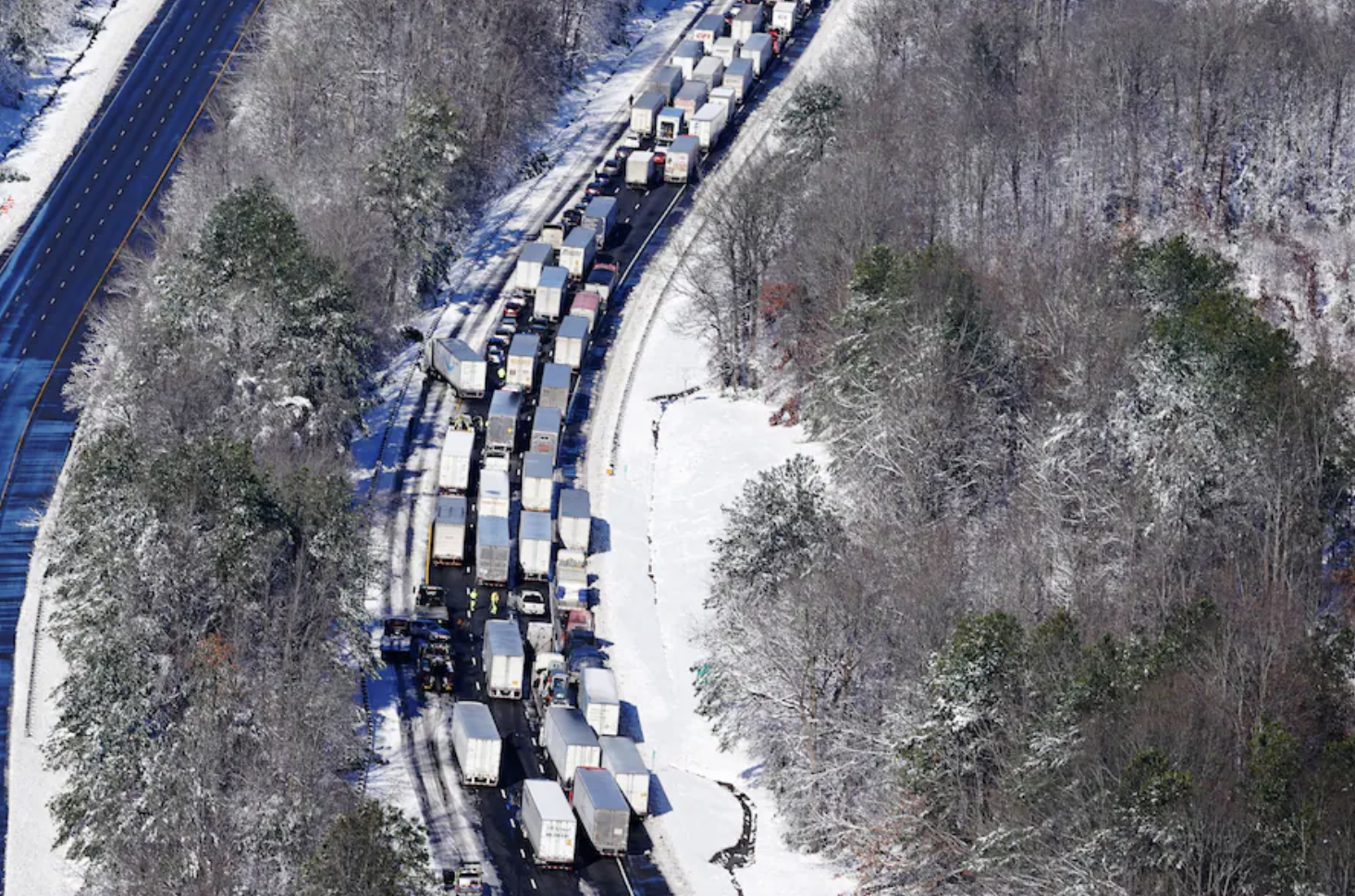Citizens blame extensive I-95 backups on poor communication by the government

After ice and snow stranded some motorists on Interstate 95 in Virginia for more than 24 hours, some citizens are questioning whether or not the government did enough to warn drivers about the potential for such a disaster.
As of Wednesday, January 5th, the Virginia Department of Transportation was still working to clear roads in the Fredericksburg area and urging drivers to stay off the roadways. More than 100 roadways were still closed on Wednesday afternoon due to snow, ice, or fallen trees and utility lines, and VDOT warned that they were first working to clear roads connected to hospitals before moving on to residential areas.
“Work will continue until all state-maintained roads are safe for travel,” VDOT said.
VDOT says that their road crews were overwhelmed by the snow, which fell faster and heavier than predicted and caused the major traffic jam. The agency also claims that they did not treat the roadways prior to the snow due to the forecasted rain, which would have washed away the salt and chemicals anyway. Now, citizens are questioning whether the state did enough to warn drivers about the potentially hazardous conditions, and whether they were proactive enough in closing the interstate once they realized there was a major issue.
“Clearly, this situation needs to be carefully reviewed from every standpoint,” said David Snyder, a Falls Church City Council member who has worked on regional transportation and emergency preparedness issues. Snyder says he has already requested that the Metropolitan Washington Council of Governments examine what went wrong on I-95.
“The focus needs to be on how you prevent the chain of events that occurred so people aren’t in this situation, and then once they’re in it, what kind of communication helps people get through it.”
Snyder also speculates that motorists may not have realized the impact the weather may have on travel, as the area has not seen significant snowfall in around three years, and that they likely didn’t realize that staying home was the best option. Additionally, Snyder wants a closer look into when VDOT closed I-95 once they realized there was a problem, how appropriate that timing was, and whether or not the decision to not pretreat the highway was the correct one.
“That public communication element is very, very important,” Snyder said. “Whatever was done in this case, clearly it wasn’t enough to help prevent people from getting into this situation.”
“It was a complicated situation with numbers that were bouncing around,” he continued to The Washington Post.
“Maybe the approach is to start sharing the worst-case analysis [before a storm,]” he said.